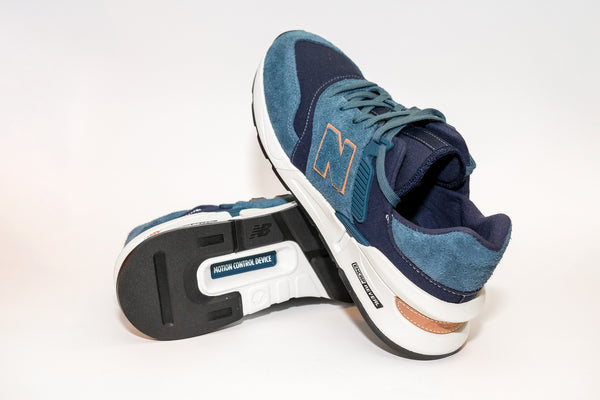
A Beginner's Guide to Trail Running Shoes: Hoka vs. New Balance
Share
If you're ready to venture off the beaten path and hit the trails for some exhilarating trail running, one essential piece of equipment you'll need is a reliable pair of trail running shoes. Trail running shoes are specifically designed to tackle the challenges of uneven terrain, offering superior traction, stability, and protection.
Two popular brands known for their trail running footwear are Hoka and New Balance. In this beginner's guide, we'll compare Hoka and New Balance trail running shoes, helping you make an informed choice for your next outdoor adventure.
Hoka Trail Running Shoes
Hoka is renowned for its innovative designs that prioritize cushioning and comfort without compromising performance. Hoka trail running shoes are loved by many for their maximalist approach, providing ample cushioning to absorb the impact of uneven surfaces. This extra cushioning helps to reduce fatigue and enhances stability on the trails.
Hoka's signature Meta-Rocker technology promotes a smooth and efficient stride, allowing you to tackle challenging terrains with ease. The brand offers a wide range of options suitable for various trail conditions, from rugged mountain trails to technical single tracks.

New Balance Trail Running Shoes
New Balance, a well-established athletic footwear brand, has made a mark in the trail running market with its reliable and versatile trail running shoes. New Balance trail running shoes are known for their durability, traction, and responsive cushioning. These shoes feature aggressive outsoles with multidirectional lugs that provide excellent grip on slippery and loose surfaces.
New Balance utilizes advanced technologies like REVlite foam and Fresh Foam cushioning to offer lightweight and responsive rides on the trails. The brand offers a diverse lineup of trail running shoes, catering to different preferences and terrain types.

Choosing the Right Pair for You
When it comes to selecting the ideal trail running shoes, several factors should be considered based on your needs and preferences:
-
Terrain: Assess the type of trails you'll be running on. Are they rocky, muddy, or technical? Hoka shoes with their generous cushioning and stability features are well-suited for rugged and long-distance trails, while New Balance shoes excel in providing traction on a variety of surfaces.
-
Fit: Fit is crucial for any running shoe. Both Hoka and New Balance offer a range of widths and sizes to accommodate different foot shapes. Try on several models to find the one that feels snug and secure without any discomfort or pressure points.
-
Cushioning: Consider the amount of cushioning you prefer. If you desire maximum cushioning for enhanced shock absorption, Hoka's plush midsole designs might be the right choice. On the other hand, New Balance offers a balance between cushioning and responsiveness, which can be suitable for runners who prefer a more connected feel to the ground.
-
Stability and Support: Evaluate your need for stability and support. Hoka's wider base and built-in stability features can provide added support on uneven terrains. New Balance also offers stability features in select models, catering to runners who require additional pronation control or ankle stability.
-
Trail-Specific Features: Take note of the specific features that each shoe model offers, such as rock plates for protection against sharp objects, water-resistant uppers for wet conditions, or gaiter attachment points for added debris protection.

The best trail running shoe for you will depend on your individual preferences, running style, and the type of trails you'll be exploring. We recommend getting sized by a professional to try on different models and seek expert advice to find the perfect fit.
If you'd like to learn more about how to pick the right running shoes for you, be sure to check out our other post on choosing the right running shoes!
In conclusion, both Hoka and New Balance are reputable brands with a strong presence in the trail running shoe market. Hoka offers maximal cushioning and stability, while New Balance focuses on durability, traction, and responsiveness.

By considering your specific needs, such as terrain, fit, cushioning, stability, and trail-specific features, you can make an informed decision when choosing between Hoka and New Balance trail running shoes. Remember to try on multiple models and seek advice from experts to ensure the perfect fit for your feet and running style.
So, lace up your shoes, hit the trails, and enjoy the exhilarating experience of trail running with confidence and comfort!
